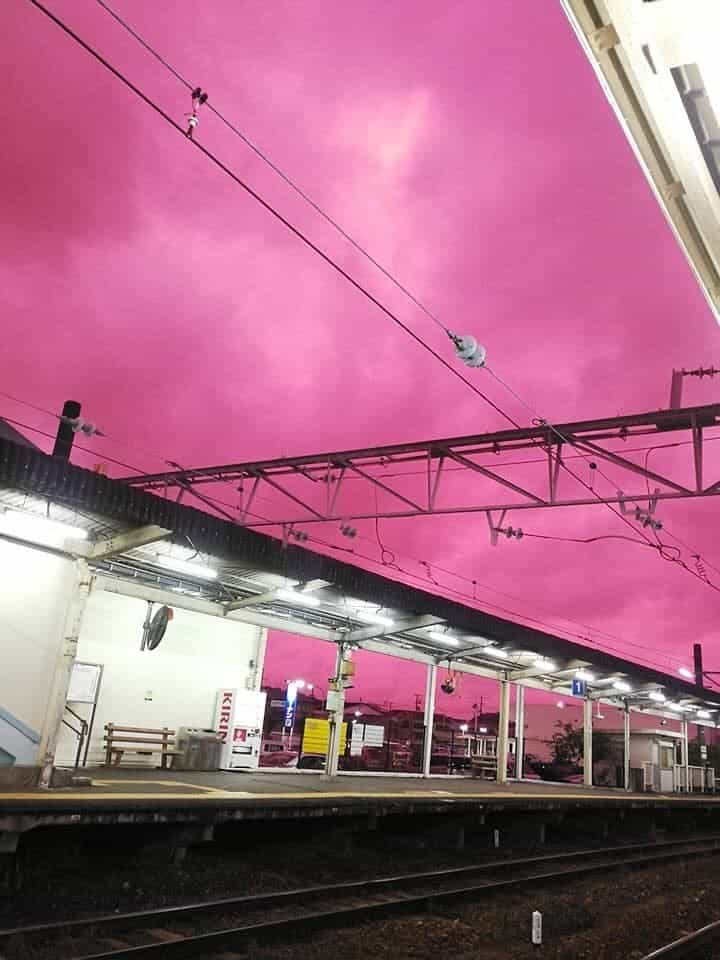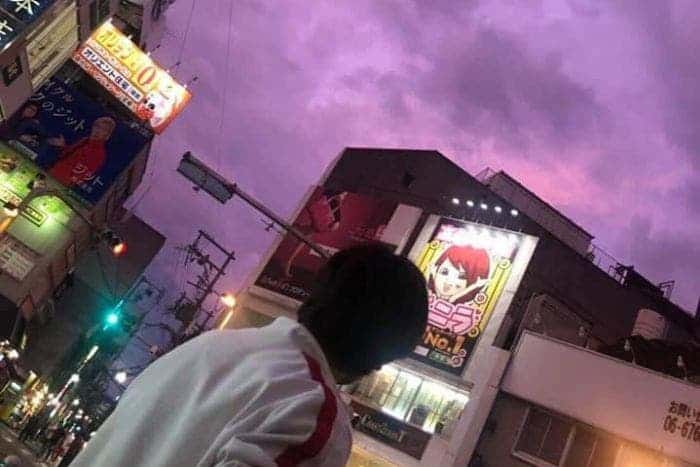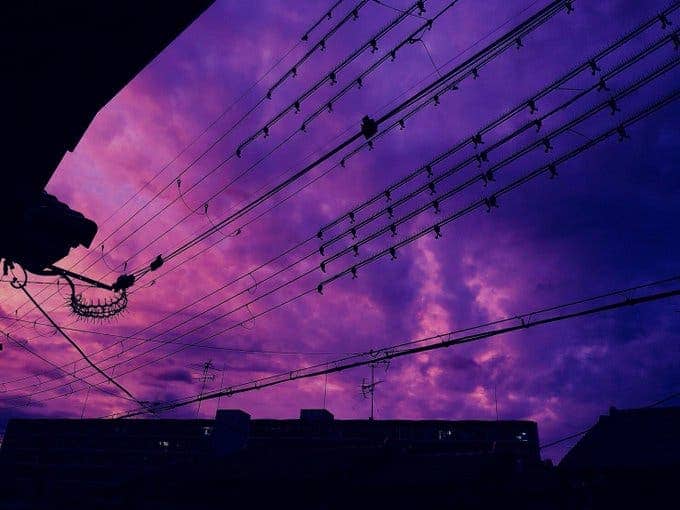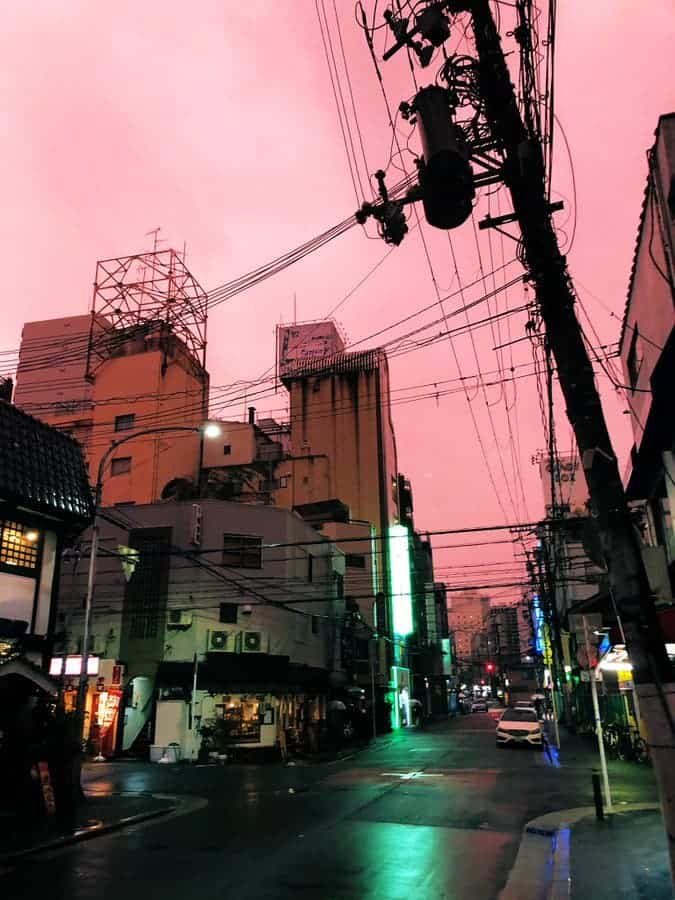Hagibis Typhoon struck Japan with massive winds and rain, becoming the strongest storm to hit the country in decades. But right before it hit, the skies looked like this:

It’s not unusual for pre-storm skies to have intense, unusual colors. When a particularly strong storm hits (whether it’s a typhoon, cyclone, or hurricane), the skies can take pinkish or violet hues.
While it may look beautifully ominous, there is a scientific reason why this happens — and it involves physics.

This eerie phenomenon, which often precedes or follows a major storm, is the result of “scattering”. First of all, we need to understand why the sky is blue in the first place.
There are tiny molecules of water, dust, and other gases in the atmosphere. These molecules scatter sunlight and diffract into different color wavelengths. Because blue has the shortest wavelengths in the visible spectrum, it is scattered more than the other colors, and it travels as shorter, smaller waves. This is why we see the sky as blue — at least most of the time.
Heavy storms push away the larger molecules which scatter wavelengths more evenly. This makes the colors of the sky appear more vivid, but that’s just a part of it.

When a massive storm hits, warm air rises rapidly above seawater, causing evaporation. This leaves behind a higher amount of salt molecules and crystals, which cause a more intense scattering of shorter wavelengths, which we see superimposed on the normal blue colors of the sky.
This is a different process to sunrise or sunset, which can also produce somewhat similar colors. That happens because when the sun is low on the horizon, sunlight passes through more air at sunset and sunrise than during the day, which means more molecules to scatter the violet and blue light.
“More atmosphere means more molecules to scatter the violet and blue light away from your eyes,” writes Steven Ackerman, Ph.D., a professor of meteorology at the University of Wisconsin–Madison. “If the path is long enough, all of the blue and violet light scatters out of your line of sight. The other colors continue on their way to your eyes. This is why sunsets are often yellow, orange, and red.”
Instead, when it comes to storms, it’s this modification of the atmosphere that is responsible for the vivid sky colors. But there’s another trick we need to discuss.

Although the sky shows up as violet, it’s not really violet — instead, what we’re seeing is pink superimposed on the regular blue color of the sky, particular when it gets darker outside.
But wait a minute, a pink wavelength doesn’t exist
Good observation! Pink is not in the color spectrum, which las led to some people wrongly claiming that pink is not a color — obviously it’s a color, we can see it (and sometimes in the sky nonetheless). However, pink is not a transmissive color, it’s a reflective color.

An object is colored because some wavelengths are reflected and others are absorbed. In other words, when something is blue (or red, or any color), it absorbs all wavelengths except for the one we are seeing (the one that gives its color). This explains why we see most colors, but things lie differently for pink (and other colors, such as cyan, brown and magenta). We perceive it because of the way our brain translates light bouncing off of different objects.
So even though pink is not in the spectrum, we can obtain it easily by mixing red and white pigment, for instance. But don’t look down on pink — all colors are interpretations of our brain, so it doesn’t make pink any lesser of a color.
As for Japan’s skies before Hagibis, they were a sight to behold — although the events that followed were anything but beautiful.


